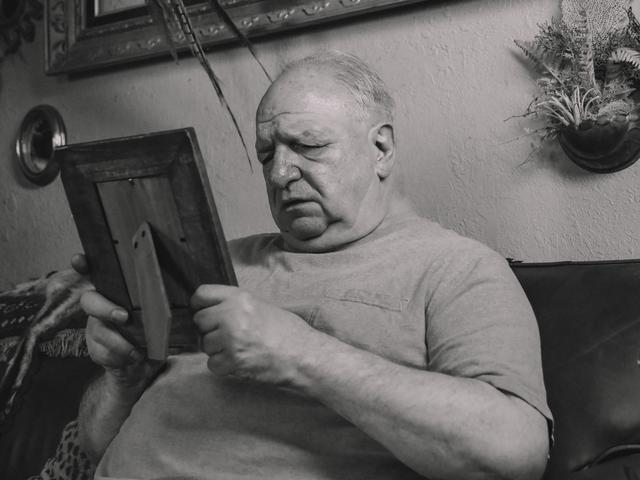Senior Living•Assisted Living•Health and Care Needs
13 Reasons Why a Care Home May Be Right For You
Senior Living•Assisted Living•Health and Care Needs
13 Reasons Why a Care Home May Be Right For You
Large Community or Small Community - That is the Question
When it comes time to consider senior living options for elderly parents or loved ones, making the right decision is vital. Not only do you want your loved ones to be well taken care of, but you also need to consider what's best for your family as a whole. Many factors can affect the decision; however, one of the first things to determine is what type of living is best.
What's the Difference?
Residential care homes provide housing and personal care services for people who cannot live independently and require assistance with personal care and nursing care for help with activities of daily living. Sometimes referred to as Care Homes, Board-and-Care Facilities, Residential Care Facilities, Personal Care Homes, Adult Group Homes, Adult Family Homes, or Adult Foster Care Homes, they vary in size. Still, most have between 4 and 8 residents, which is less than most assisted living facilities.
Residential care homes are usually private homes located in residential areas that have been converted for senior living. Most are three-bedroom and two-bathroom homes offering six beds, with one to two persons per bedroom and a shared bathroom. They are an intimate, home-like environment with fellow residents close by and caretakers within close proximity at all times.
The caretakers and staff of care homes provide around-the-clock care, including providing meals, transportation, and assistance with activities of daily living such as dressing, bathing, and using the restroom. Caretakers also provide companionship and support. They may play games with residents, go on outings with them, or simply sit and talk with them. In addition to their day-to-day duties, caretakers also play a vital role in providing emergency care. They are often the first responders in cases of falls or other accidents. They also help ensure that residents take their medication as prescribed and receive the medical attention they need. The caretakers and staff of care homes remain in close quarters with residents to meet all of their needs essential to the well-being of their residents.
The management of care homes is usually small business owners. Some care homes may be owner-operated. Having the owner on-site or in close proximity offers peace of mind to the residents and their families that someone is always there to answer any questions or address any concerns that may arise. This differs significantly from large corporate-run assisted living communities. Neither is better or worse, but they have differences that may matter to the resident and their families.
 Talk to a Senior Living Counselor612-787-7533Here are Some Reasons Why a Residential Care Home (Board and Care) May Be a Better Option for You or Your Aging Senior.
Talk to a Senior Living Counselor612-787-7533Here are Some Reasons Why a Residential Care Home (Board and Care) May Be a Better Option for You or Your Aging Senior.


1) Most care homes can offer a higher level of care than assisted living facilities
The nursing staff and caregivers in a care home are trained to provide assisted living services and around-the-clock care for their patients or residents. This type of facility is ideal for those who may not need as much medical care as a nursing home or skilled nursing facility but require more care and assistance than an assisted living community can provide.
A care home is a smaller setting. The average size of a care home is between six and ten residents, but this number can vary depending on state regulations and the house size. A smaller setting can offer the much-needed individualized attention that some seniors crave and may not receive in a larger setting. Some care homes offer specialized care.
2) The care home is likelier to have a closer ratio of residents to staff than a larger assisted living community
In a care home, the staff-to-resident ratio is typically much closer than in a larger assisted living community. This is because care homes are usually smaller in size and have fewer residents. As a result, the staff can provide more individualized attention to their assisted living residents. As residents age, their needs change as well, so having fewer, more engaged, focused caregivers can help residents as their needs change over time. This can lead to better health outcomes and quality of life.

3) Relationships between the resident and care staff may be stronger because of the consistency and regularity of the same team working each shift
The staff working in a care home generally work the same shifts each day. There is a lower staff turnover rate, so residents form bonds with their caregivers. Caregivers also have fewer residents to care for in a smaller space so their time focused on residents is more than in a larger assisted living community or nursing home environment.
4) The home-like setting may feel more comfortable and less institutional
Many people feel more comfortable in a home-like setting than an institutional setting such as a nursing home. Care homes for the elderly provide a more comfortable setting with fewer restrictions than an assisted living facility. This can benefit those who are less mobile or need more assistance with their day-to-day activities.

5) In a care home, meals are generally prepared fresh, and residents may have more input into menu planning
In a care home, meals are generally prepared fresh, and residents may have more input into menu planning. This can be an excellent opportunity for seniors to have some control over their diet and eat foods they enjoy. There is usually a home-like dining room where residents can gather for meals together in a familiar setting, unlike a dining hall or restaurant-like setting often found in larger communities.
6) The physical layout of a care home is generally more conducive to socialization and interaction among residents
Most care homes are designed with a communal living space where residents can gather and interact with one another. This setup is generally more conducive to socialization and interaction than if residents lived in smaller, individual rooms with communal areas further away from living quarters.
7) Care homes typically offer a higher staff-to-resident ratio
Most care homes offer a high staff-to-resident ratio, which means there is always someone on hand to help residents with their needs. This is especially important for elderly residents, who may need assistance with tasks such as bathing, dressing, escorts while walking, medication management, standing, sitting, and eating. Having a high staff-to-resident ratio also means that residents receive more personal attention, get to know the staff members well, and develop close relationships with them. This can be very beneficial for elderly residents, who may often feel lonely or isolated.
8) Fewer residents can create a sense of family in the community
Care homes for elderly residents often have a sense of community among the residents. This is partly due to the fact that there are fewer residents compared to a larger assisted living community or nursing home. This allows each resident to get to know one another better and form relationships through smaller and more intimate recreational activities, social activities, and daily living.
Additionally, care home staff can provide more personalized care since there are fewer residents to attend to. Caregivers and staff are more akin to family or loved ones and trusted personally, which may not be the case in a community with several caregivers interacting with the senior resident.

9) Fewer residents may feel safer and more secure than seniors who have not historically been socially active
For seniors who were not socially active before assisted living, care homes provide an environment that is more intimate and may feel safer and more secure than a larger community. In a larger community, large groups and activities may be stressful or anxiety-ridden for seniors who are uncomfortable in such settings.
When seniors are placed in an environment with more social stimulation than they are comfortable with, they may have adverse reactions and may even isolate themselves in avoidance. Interactions with others are a key aspect of health and longevity for seniors, but they may be best done in a smaller, more intimate living environment.
10) Monthly rental rate is typically lower than in larger assisted living communities
The monthly cost of rental rates is typically lower than in larger assisted living communities. This is because care homes for the elderly typically have fewer residents and staff, which keeps costs down. And because they are smaller living spaces, there are fewer amenities and activities that increase the cost of living.
It is also not uncommon for rooms to be shared with other residents, though private rooms may also be offered. Other rooms, such as the bathroom and kitchen, are shared among all of the residents.
11) The dining experience is relaxed and more of a home-like setting
The dining experience is relaxed and more home-like. There are no strict rules about when, how much, or set meals daily. This gives residents the freedom to eat when hungry and take their time. In some cases, the care home may even allow residents to cook their own meals using the on-site kitchen. This gives them a sense of independence and control that they may be missing elsewhere in their lives.
12) Closer attention and monitoring of dietary restrictions
Closer attention and monitoring of dietary restrictions is needed in care homes for elderly residents. Often, older adults have difficulty remembering to eat correctly or following doctors' orders regarding specific diets. As a result, they may not get the nutrients they need, leading to health problems.
Care home staff should be aware of the dietary restrictions for each resident and should closely monitor their eating habits. This will help ensure that residents get the proper nutrition and avoid potential health issues. Staff can be more involved with residents who need additional assistance feeding.
13) When a resident has a high level of health needs, the cost of care in a care home may be lower than in that of a large assisted living facility
When a resident needs a high level of care, the costs in a care home may be lower than in a large assisted living community. The benefit of residing in a care home is that the resident has access to all of the necessary staff and services on a 24-hour schedule, seven days a week, and care can be customized to the individual without restrictions that sometimes limit care in larger communities that are meeting the needs of dozens of residents.
In addition, many care homes have lower overhead costs than assisted living communities, which allows them to offer their services at a lower cost. Shop and compare in senior living for the large and small communities to see which is best.
Conclusion
Now that you understand some of the advantages of a care home, these thirteen examples will help prepare you to find the best living option for yourself or the aging senior in your life. Plenty more research and facets of your search will define what is best for you. Continue to be diligent because once you find your perfect senior living community, you will be confident in your choice.
_________________________
This article is intended solely for informational purposes and should not be construed as medical, legal, or financial advice. It does not establish a professional relationship between Purple Door Finders and the user. For any personal matters or decision-making, it is strongly recommended to seek guidance from a qualified healthcare provider, attorney, or financial advisor. While links to third-party websites are provided for your convenience, please be aware that Purple Door Finders neither endorses nor assumes responsibility for the content of these external sites.
FAQ
Are assisted living facilities licensed?
Each state establishes licenses, and each state's certification requirements for assisted living communities are established and enforced. In addition, there are federal rules and regulations established for assisted living communities, and there are state-level rules and regulations established for assisted living services and operations.
What does assisted living provide?
Assisted living provides a housing situation to help residents maintain their independence while receiving some assistance with the "Activities of Daily Living." Specifically, meal preparation, eating, toileting, bathing or showering, transferring from bed to chair, medication management, personal hygiene, and dressing. In addition, an assisted living community typically offers social and physical activities and transportation.
What's the difference between assisted living and a nursing home?
Assisted living offers care in a home-like setting with trained caregivers. A nursing home offers care in a clinical or hospital-like setting, and care is overseen by a licensed or registered medical practitioner
Are care homes licensed?
Yes, care homes that offer assisted living services are licensed with their state as a residential care facility for the elderly (RCFE)
What do care homes offer?
Care homes can offer a number of services or they may specialize in certain care types and services. A list of care types may be, independent living, assisted living, memory care, respite, hospice, etc.



